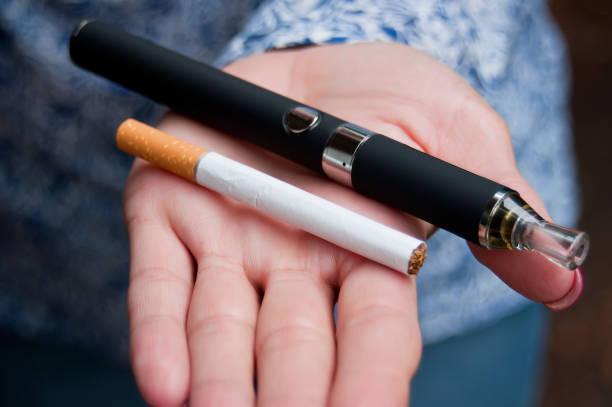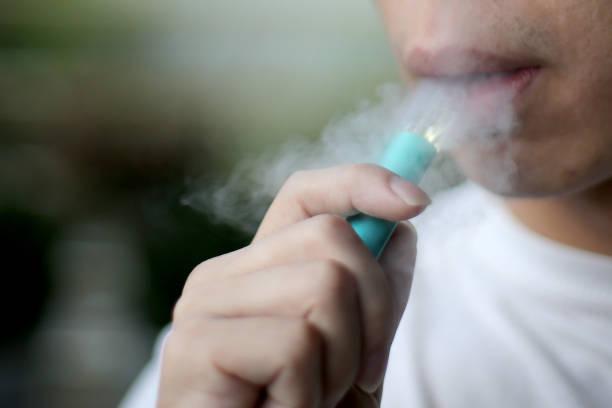In recent years, vaping has become an increasingly popular trend across the globe. Though once seen as a safer alternative to traditional cigarettes, vaping’s rise in usage, particularly among younger people, has sparked concerns about its health effects. Among the issues emerging from widespread vaping, one of the most pressing is its potential link to mental health problems, especially depression. But just how big is the problem, and what do we really know about the effects of vaping on our mental well-being?

Let’s break down the facts, and explore how vaping fits into the conversation about mental health today.
What Exactly Is Vaping?
Vaping is the act of inhaling a vapor produced by an electronic device, often called a “vape.” Vapes work by heating a liquid (often referred to as “e-liquid” or “vape juice”) which contains nicotine, flavorings, and other chemicals. The liquid turns into an aerosol (commonly known as “vapor”) when heated by the vape’s battery-powered atomizer, allowing the user to inhale it into their lungs.

While vapes come in various sizes and designs, most modern devices are sleek and portable, making them easy to carry and use discreetly. And it’s not just nicotine anymore; the world of vaping offers a smorgasbord of flavors ranging from fruity to minty to dessert-like concoctions. But while the flavors may be enticing, there’s more going on than just satisfying a sweet tooth.
The Rapid Rise of Vaping Among Teens
Vaping has gained massive traction, especially among teenagers and young adults. According to recent surveys, the usage rate of vapes among adolescents has spiked alarmingly in recent years. Although we don’t have exact numbers for the current year, in 2019 nearly 27% of high school students reported using a vape within the past month. That’s almost a third of all high schoolers.
But why is this happening? Well, part of it comes down to the appeal of flavors and the misconception that vaping is harmless. Many young people assume that vaping is safer than smoking traditional cigarettes because they don’t see the obvious dangers or because the vapor doesn’t have the same smell or stigma as tobacco smoke. Unfortunately, the reality is far from that.
The History of Vaping
The journey of vaping started back in 1963, when a man named Herbert A. Gilbert applied for a patent for a “non-tobacco cigarette.” However, the device never gained much traction. Fast-forward to 2003, and Chinese pharmacist Hon Lik invented the modern e-cigarette, which was the first device designed to vaporize liquid nicotine. By 2006, the e-cigarette had taken off in Asia, and it wasn’t long before the trend made its way to the West.

Since then, the vaping industry has exploded, with major corporations investing billions of dollars into it. The marketing strategies have been particularly effective among younger audiences, with social media influencers endorsing the products and creating viral content around them. This, combined with the increasingly enticing flavors (think watermelon, cotton candy, or tropical punch), has made vaping an attractive habit for young people.
Vaping and Its Mental Health Impacts
There’s no question that vaping has its risks, but what about its effects on mental health? We know that nicotine itself has a significant impact on the brain. It triggers the release of dopamine, a neurotransmitter associated with pleasure and reward. This can make vaping highly addictive, especially for young people whose brains are still developing.
But addiction isn’t the only concern. Research has shown that nicotine can also have negative impacts on mental health, potentially contributing to conditions like anxiety, depression, and even cognitive decline.
One study found that adolescents who used nicotine regularly were more likely to report feelings of sadness, hopelessness, and a loss of interest in activities they once enjoyed. Although the direct link between vaping and depression is still a subject of debate, there is growing evidence to suggest that nicotine from vapes can exacerbate or even trigger depressive episodes, particularly in teens and young adults.
This is especially worrying since depression rates among young people have been on the rise in recent years. In fact, data from the Centers for Disease Control and Prevention (CDC) shows that the rate of depression among teenagers has steadily increased over the past decade. Whether vaping is contributing to this trend remains uncertain, but experts warn that the addictive nature of nicotine could play a significant role.
Is Vaping Addictive?
Absolutely. Vaping is addictive due to the nicotine content in the e-liquids. In fact, the amount of nicotine in some vapes can be much higher than that found in traditional cigarettes. When nicotine is inhaled, it quickly enters the bloodstream and reaches the brain, triggering the release of dopamine and causing feelings of pleasure or euphoria. However, as the body becomes accustomed to nicotine, it requires more to achieve the same effect, leading to a cycle of addiction.
When users try to stop, they can experience withdrawal symptoms such as irritability, anxiety, and cravings, making it difficult to quit. This is one of the reasons why vaping has become such a problem among teens. The fast-acting nature of nicotine makes it incredibly addictive, and the easy access to flavored vapes only makes it more enticing.
The Dangers of Secondhand Vape Smoke
Not only does vaping harm the person doing the inhaling, but secondhand vape smoke can also have serious health implications. A lot of people think that because vapes produce a vapor, it’s somehow safer for those around them. However, this is far from true. In fact, secondhand vape aerosol can contain a variety of toxic chemicals, including formaldehyde, acetaldehyde, and acrolein, which are known to cause cancer.
Additionally, the aerosol can contain nicotine, which can have harmful effects on those exposed to it. This is especially concerning for pregnant women and young children, whose developing bodies are more susceptible to the harmful effects of nicotine and other chemicals found in vape smoke.
Studies have shown that secondhand vape exposure can lead to respiratory issues, eye irritation, and even cardiovascular problems. And with more and more people vaping in public spaces, the dangers of secondhand smoke are becoming a growing concern.
The Long-Term Risks of Vaping
So, what does the future hold for vaping? While vaping is often touted as a safer alternative to smoking, the long-term health effects are still largely unknown. What we do know is that vaping is not without risks. The chemicals in vape liquids, including flavoring agents and other additives, can have harmful effects on the lungs and the cardiovascular system.

In addition, the addictive nature of nicotine can lead to long-term dependency, making it harder for users to quit. As research on the health effects of vaping continues to emerge, it’s becoming clearer that vaping is not the harmless activity it was once thought to be.
Conclusion: Should You Vape?
At the end of the day, the question remains: Should you vape? While some might view it as a safer alternative to smoking, it’s clear that vaping carries its own set of risks—particularly for young people. The addictive nature of nicotine, the potential mental health implications, and the long-term health risks are all important factors to consider before picking up that vape.
As vaping continues to grow in popularity, it’s crucial for young people to understand the potential consequences of their actions. The best way to avoid the risks associated with vaping is to never start in the first place. If you are already vaping and struggling with addiction, it’s important to seek help and explore ways to quit. Your future self will thank you.
Stay informed, stay healthy, and don’t let the sweet flavors fool you—vaping is far from harmless.


